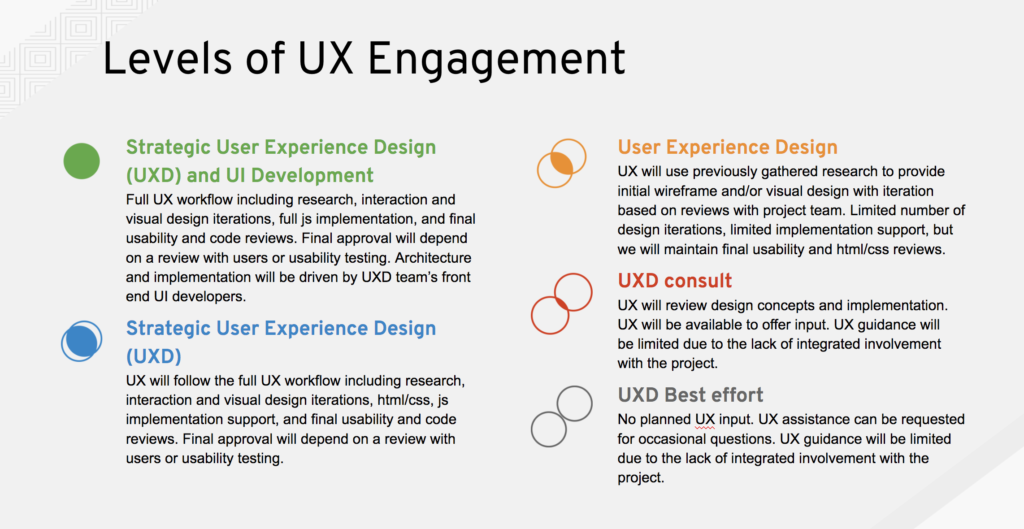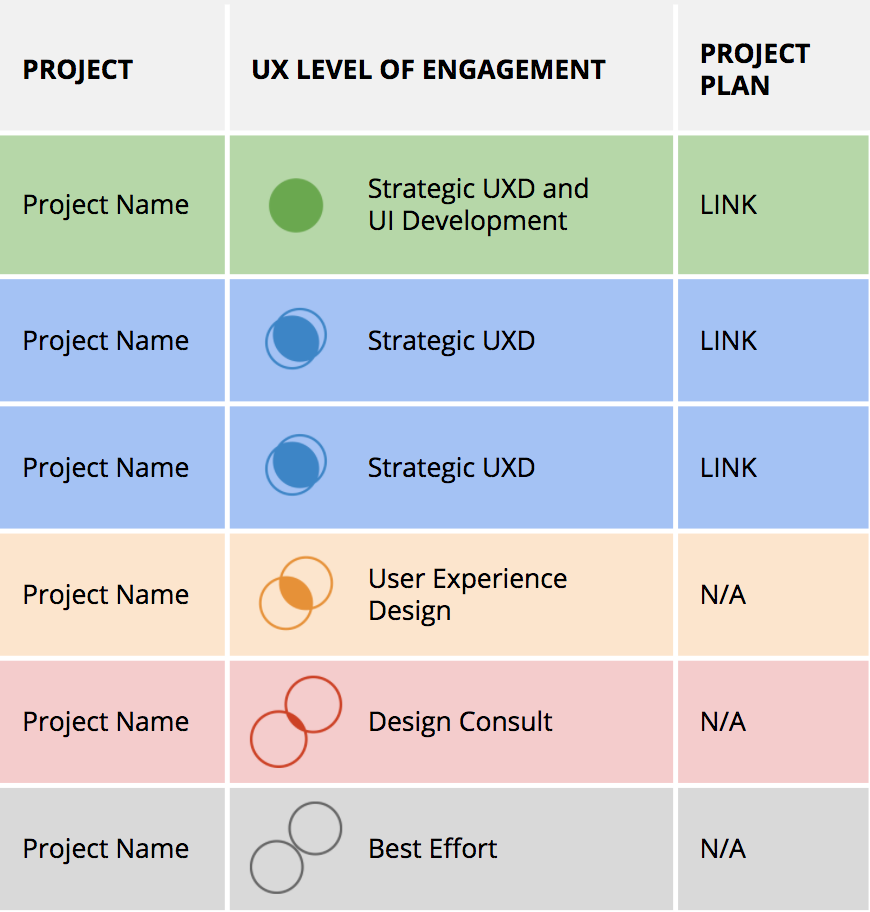I often find that I need to discuss the different ways we are engaging with teams with stakeholders. As a central UXD organization in Red Hat, we have to prioritize which areas we focus our attention on, making sure we are spending our UX resources in the right way at the right time. We want to build long term relationships and knowledge in certain technologies and teams, while also weighing business objectives and strategic investment as things change over the years.
One tool I have been using to talk about our investment in UXD on different projects is a UXD Levels of Engagement diagram. I start by showing and explaining the different levels of engagement we could have with a project.

We have defined 5 levels of Engagement:
- Strategic User Experience Design (UXD) and UI Development – Full UX workflow including research, interaction and visual design iterations, full js implementation, and final usability and code reviews. Final approval will depend on a review with users or usability testing. Architecture and implementation will be driven by UXD team’s front end UI developers.
- Strategic User Experience Design (UXD) – UX will follow the full UX workflow including research, interaction and visual design iterations, html/css, js implementation support, and final usability and code reviews. Final approval will depend on a review with users or usability testing.
- User Experience Design (UXD) – UX will use previously gathered research to provide initial wireframe and/or visual design with iteration based on reviews with project team. Limited number of design iterations, limited implementation support, but we will maintain final usability and html/css reviews.
- User Experience Design (UXD) Consult – UX will review design concepts and implementation. UX will be available to offer input. UX guidance will be limited due to the lack of integrated involvement with the project.
- User Experience Design (UXD) Best Effort – No planned UX input. UX assistance can be requested for occasional questions. UX guidance will be limited due to the lack of integrated involvement with the project.
Understanding our 5 levels required understanding the history of our team and how we’ve grown it. UI Development is still a newer and growing discipline in our team, and allows for us to more quickly and accurately implement our designs to spec. Other companies might come from a different background where UI development is not as strategic as it is for our team, so changing the definitions towards your unique situation makes sense.
Regardless of definitions, I would suggest maintaining a difference between those projects that require more fine-grained UX inclusion in the initiation of the project (strategic UX means you should be influencing the direction of the project during conceptual phases) and the conclusion of work (ensuring implementation meets user needs and expectations) to those that might get cursory direction from UX to ensure they appear professional, but will not necessarily will ensure they are great experiences. You can also show levels that you can’t actually achieve today, highlighting the types of resourcing and disciplines needed to do strategic UXD in a way that cannot be achieved currently.
This leveling than can then be mapped against the areas of the portfolio, or even areas of a single project, to show how UX resources are being spent in the organization. This should be reviewed as often as planning is done for the portfolio or projects with decision makers to evaluate how UX resources should be allocated alongside any changes in the business strategy.

From this document, you could link to project plans or project dashboards that track more details for stakeholders in an ongoing basis. You can see how we’re capturing more details about projects, their monthly status, and their prioritization in my post on project prioritization.
